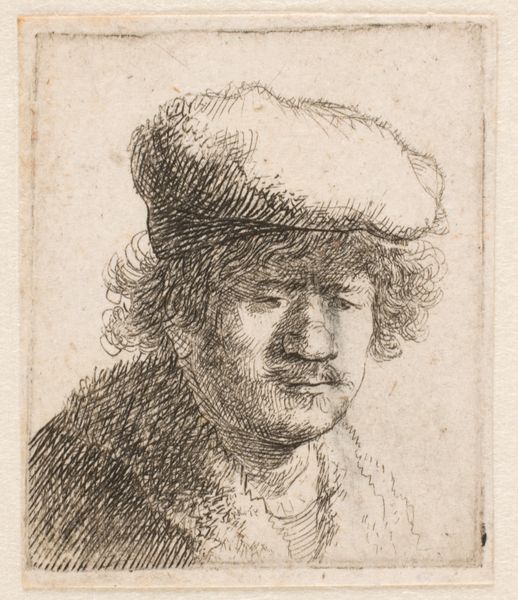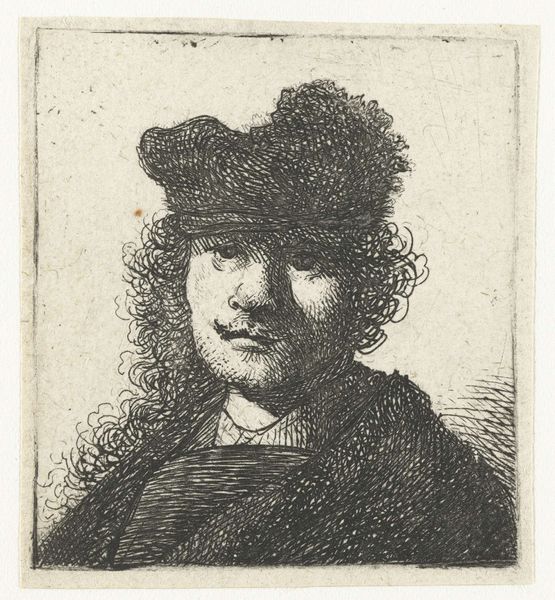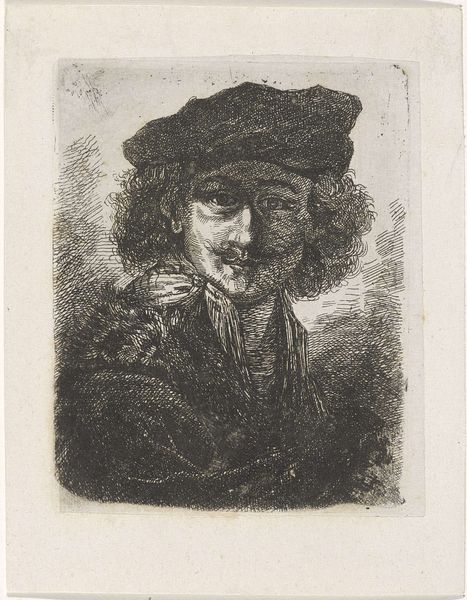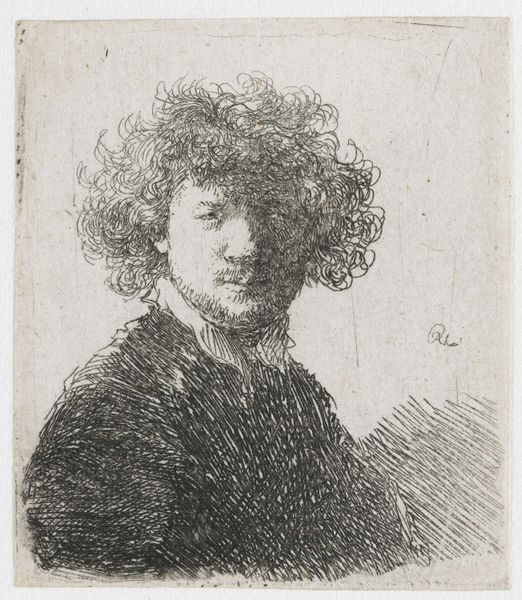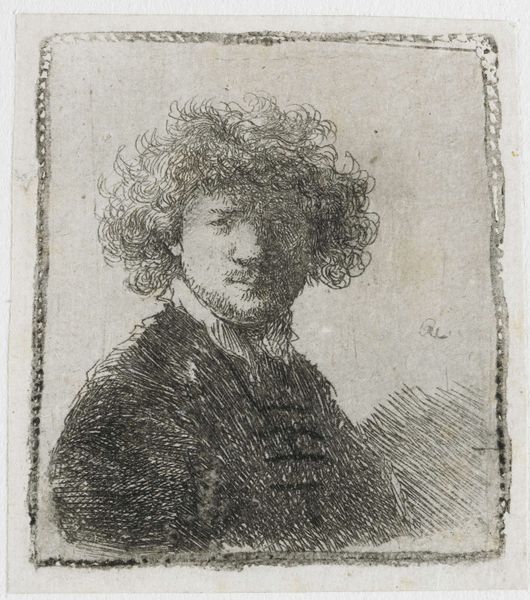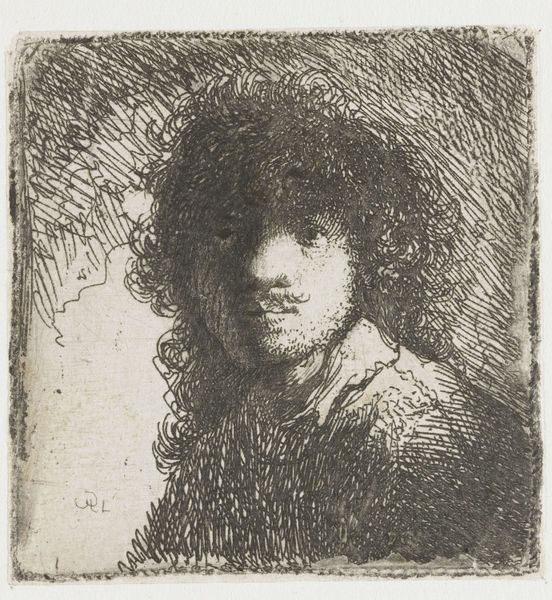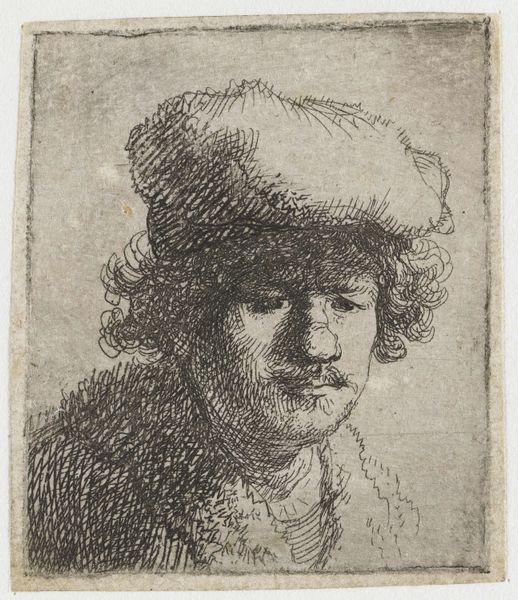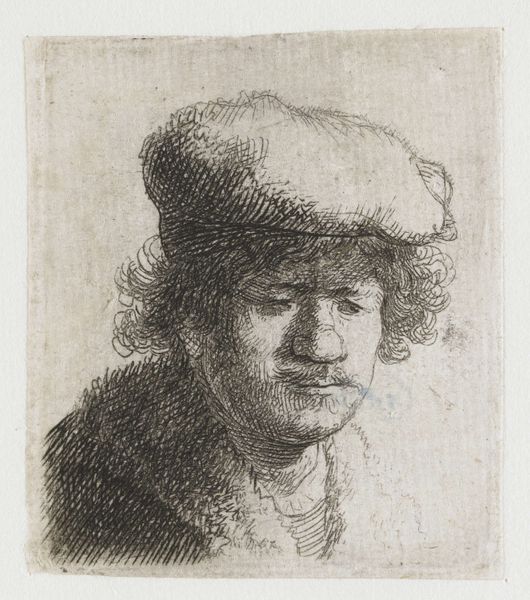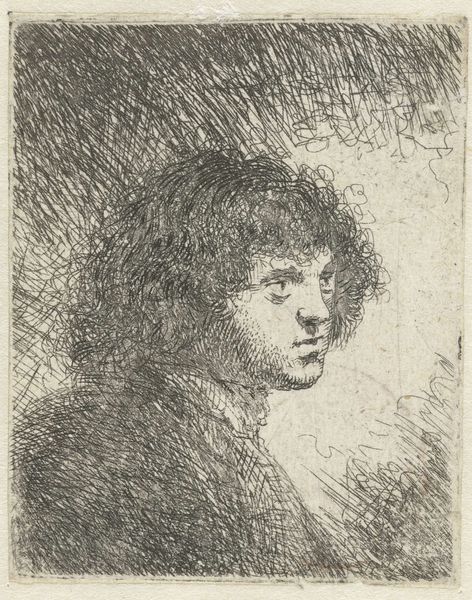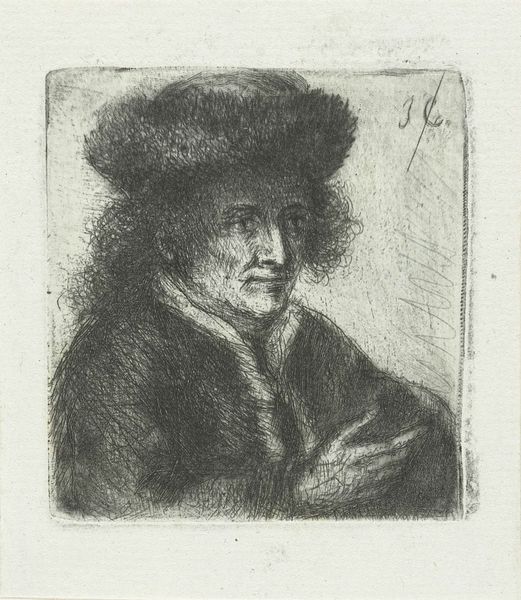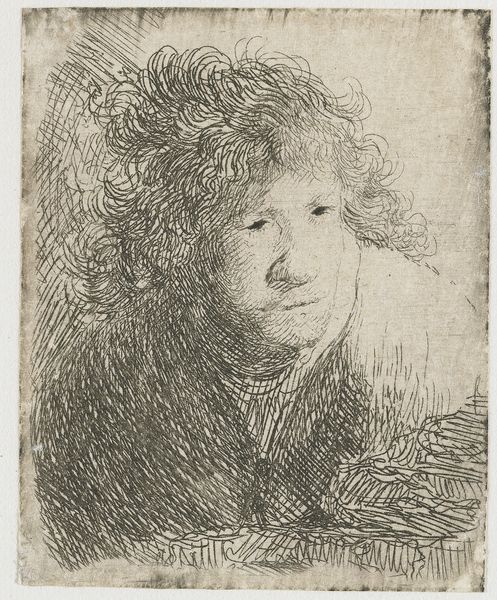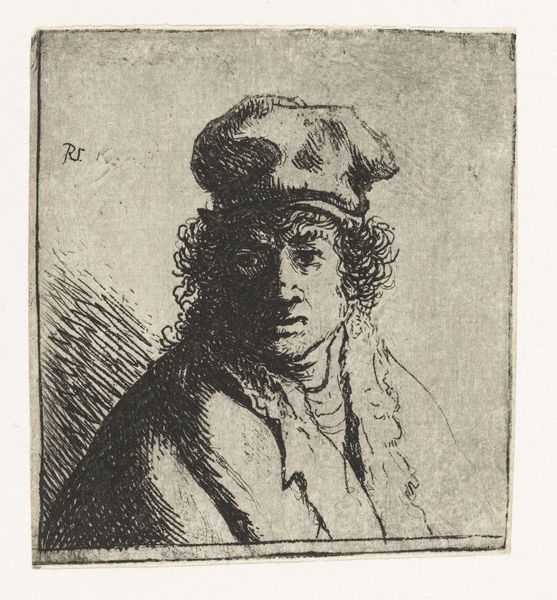
Dimensions: height 63 mm, width 66 mm
Copyright: Rijks Museum: Open Domain
Editor: This is "Man met hoed en platte kraag," created between 1748 and 1795 by Jan Chalon. It's an etching, a print. It feels intimate, almost like a candid snapshot. What can you tell me about it? Curator: I see here a careful rendering of masculinity at a time when class structures were incredibly rigid. The etching, a process allowing for multiples, makes me consider the potential democratization of images, even portraiture. How does this depiction of a "man with a hat" subvert or perhaps reinforce notions of identity and status in the late 18th century? What does the very act of reproducing this image do? Editor: So, you're suggesting that this relatively accessible medium allows for a wider audience to engage with portraiture, potentially challenging traditional hierarchies associated with it? Curator: Precisely. And consider the sitter's gaze – is it inviting or confrontational? What societal pressures and performance aspects can we detect in it? Editor: He does seem to have a self-assured, direct gaze... almost challenging the viewer, but without being overtly aggressive. It's quite nuanced. Curator: The technique contributes to that feeling too; the very medium is inherently reproducible and somewhat democratic. Is it perhaps pushing against conventions? The question I ask is, what can we read about how men wished to be seen, and how artists fulfilled those ideals? Editor: It’s fascinating how much social context can be embedded in a seemingly simple portrait. The intersection of identity, class, and artistic technique you highlighted has given me a lot to think about. Curator: Exactly! And to consider that, like today, visibility has complex ties to the person depicted. We are able to think about who has the right to that visibility and what power and constraints shape it.
Comments
No comments
Be the first to comment and join the conversation on the ultimate creative platform.
